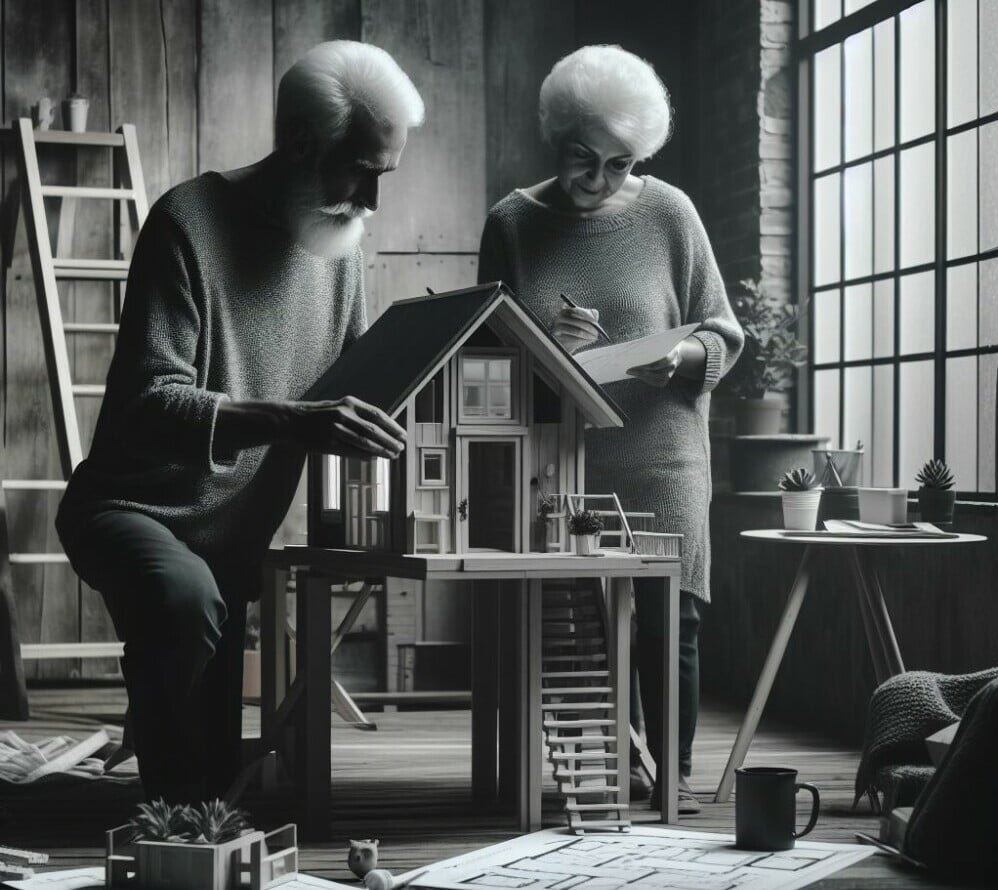Join the growing number of retirees choosing simplicity and downsizing as they embark on their next chapter! Retire With A Tiny Home movement is taking the retirement world by storm, offering a fresh and innovative approach to post-career living. In this exciting exploration, we uncover the rising trend of retirees embracing the tiny home lifestyle. From practicality to financial perks and diverse retirement options, we’re diving deep into why tiny living might be your perfect fit. Discover the secrets behind crafting your dream tiny home, perfectly tailored to your individual needs. Plus, unlock the long-term advantages of retiring in a tiny home, from financial freedom to endless opportunities for adventure!
Understanding the Rising Trend
The allure of smaller, simpler living spaces for retirees lies in the desire to shed the burdens of maintaining large homes and possessions. This trend signifies a shift towards a more minimalistic and intentional lifestyle. Retirees are increasingly recognizing the benefits of downsizing, not only in terms of physical space but also in terms of the mental and financial burdens that come with larger residences. By embracing a minimalist approach, retirees are finding greater freedom and fulfilment in their post-career years.
Evaluating Practicality for Retirees

Tiny homes offer practical solutions for retirees entering a new phase of life. The reduced square footage means less maintenance, both in terms of cleaning and repairs, allowing retirees to focus more on enjoying their leisure time. Moreover, the compact nature of tiny homes promotes accessibility and ease of movement, addressing potential concerns related to ageing and mobility. With everything within easy reach and designed with efficiency in mind, retirees can navigate their living space with comfort and ease.
Exploring Financial Benefits
One of the most appealing aspects of the tiny home lifestyle for retirees is the potential to live mortgage-free. Downsizing to a smaller, more affordable space can significantly cushion the retirement budget, providing financial freedom and security. The savings extend beyond housing costs, as smaller spaces require less energy consumption, leading to reduced utility bills. By minimizing expenses associated with homeownership, retirees can allocate more resources towards experiences, travel, and pursuits that enrich their retirement years.
Navigating Retirement Options
The flexibility of the tiny home lifestyle presents retirees with diverse options for their post-career living arrangements. Some choose to experience tiny living through vacation trials, renting tiny home vacation properties to test the waters. Others find community living in tiny house villages to be an appealing prospect, fostering a sense of camaraderie and shared values. Additionally, parking tiny homes on family land allows retirees to maintain close ties with loved ones while enjoying the independence of a smaller living space. For those with a penchant for seasonal travel, zoned tiny home lots cater to migrating snowbirds, offering the freedom to move with the changing seasons. With a myriad of options available, retirees can tailor their living situation to align with their preferences and lifestyle goals.
Designing Your Ideal Tiny Home Retirement

Crafting the perfect tiny home for retirement involves careful consideration of individual needs and preferences. Space efficiency is paramount, with creative storage solutions and multifunctional furniture being key components. Retirees can choose from a variety of tiny home types, ranging from mobile options for those with a wanderlust spirit to permanent structures that provide a stable foundation. Incorporating amenities and accessibility features ensures comfort in later years, creating a home that evolves with changing needs. By customizing their living space to suit their unique requirements, retirees can create a sanctuary where they can thrive in their retirement years.
Question and Answer Section: Tiny Home Retirement
Q1: What are the key considerations when designing a tiny home for retirement?
A1: Designing a tiny home for retirement requires careful consideration of several factors. These include prioritizing essential features such as accessibility, comfort, and safety, maximizing space efficiency through creative storage solutions and multifunctional furniture, and ensuring the home can adapt to changing needs over time.
Q2: Are there specific design principles recommended for creating a functional and comfortable tiny home for retirees?
A2: Yes, some recommended design principles for tiny homes for retirees include maximizing natural light to create an open and airy feel, utilizing efficient layouts to optimize space usage, incorporating ergonomic features for comfort and accessibility, and choosing durable, low-maintenance materials for longevity.
Q3: What innovative storage solutions or space-saving techniques are well-suited for tiny homes?
A3: Innovative storage solutions for tiny homes may include built-in cabinets and drawers under staircases or beds, utilizing vertical space with shelves or hanging storage, incorporating furniture with hidden compartments, and using foldable or collapsible furniture to maximize space when not in use.
Q4: What accessibility features are essential for a tiny home designed for retirees?
A4: Essential accessibility features may include single-floor living to eliminate stairs, wide doorways and hallways to accommodate mobility aids, lever-style door handles for easy operation, and low or zero-threshold entries to facilitate wheelchair access.
Q5: How can retirees balance the desire for mobility with the need for stability when choosing between mobile and permanent tiny home options?
A5: Retirees can balance mobility and stability by considering their lifestyle preferences and future plans. Mobile tiny homes offer flexibility for travel but may require more maintenance, while permanent structures provide stability but limit mobility.
Q6: What are some common misconceptions about tiny homes for retirees?
A6: Common misconceptions include concerns about limited space and comfort. However, with thoughtful design and customization, tiny homes can offer all necessary amenities and even enhance quality of life by simplifying living arrangements and reducing maintenance.
Q7: How can retirees ensure their tiny home design allows for future changes or adaptations as their needs evolve?
A7: Retirees can ensure adaptability by incorporating flexible or modular furniture, designing with universal accessibility in mind, and leaving space for potential additions or modifications as needs evolve.
Q8: What are some potential challenges retirees might face when transitioning to a tiny home lifestyle, and how can they be overcome?
A8: Challenges may include adjusting to limited space, downsizing belongings, and adapting to a different daily routine. These can be overcome through careful planning, organization, and embracing the opportunity for a simpler, more sustainable lifestyle.
Q9: Are there specific environmental considerations or sustainable design practices important for tiny homes intended for retirement?
A9: Yes, environmental considerations may include incorporating energy-efficient appliances, utilizing renewable energy sources like solar power, and employing eco-friendly building materials to minimize ecological impact and reduce ongoing costs.
The Long-Term Benefits
Retiring in a tiny home offers numerous long-term benefits. Financial savings provide security for unforeseen expenses, while the freedom to travel enhances life quality. Tiny home living fosters community engagement and autonomy while aligning with sustainability goals. Overall, it cultivates fulfilment, purpose, and connection in retirement.
Conclusion
In conclusion, choosing a tiny home for retirement embodies intentional living, financial prudence, and meaningful experiences. As this trend grows, retirees find simplicity and freedom, reshaping retirement in the 21st century. Prioritizing experiences over possessions, retirees can craft a fulfilling lifestyle aligned with their values. The tiny home movement offers a compelling option for simplicity, sustainability, and community in retirement.






